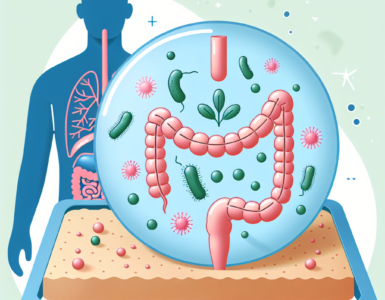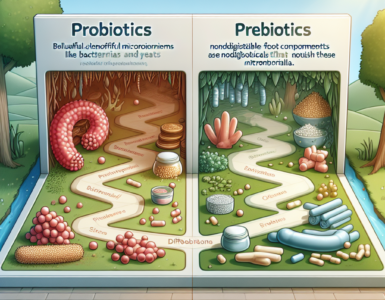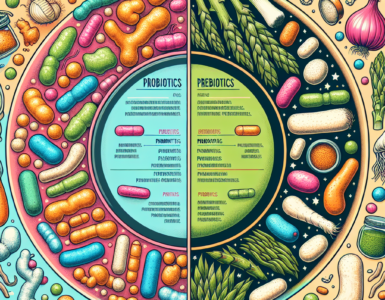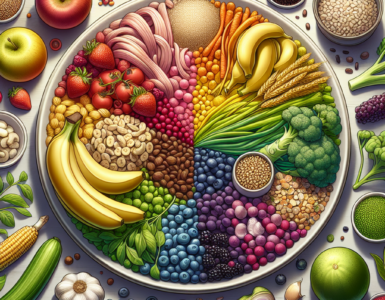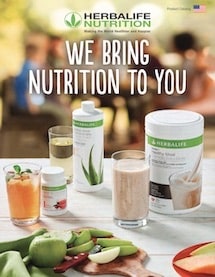The Role of Protein in Nutrition
Protein is a fundamental macronutrient that plays a critical role in the overall nutrition and health of individuals. Understanding what protein is and the reasons why the body needs it can help individuals make informed decisions about their dietary choices.
What is Protein?
Protein is a macronutrient composed of amino acids, which are the building blocks for many structures and functions within the human body. These organic compounds are linked together in long chains to form protein molecules, which are then folded into complex shapes to perform various tasks within the body.
There are twenty different amino acids that can combine to make a protein. Nine of these amino acids are considered essential, meaning they cannot be synthesized by the body and must be obtained through diet. The remaining amino acids are nonessential, as they can be produced by the body.
Why Your Body Needs Protein
The body requires protein for a plethora of reasons:
-
Tissue Repair and Growth: Proteins are essential for the growth and repair of tissues, including muscles, skin, organs, blood, and even bones.
-
Enzymes and Hormones: Many enzymes and hormones, which regulate various processes in the body such as digestion and metabolism, are proteins.
-
Immune Function: Proteins help form antibodies that fight off infections and illnesses.
-
Transport and Storage: Some proteins carry vital substances around the body, like hemoglobin which transports oxygen in the blood.
-
Energy Source: While not the primary energy source, protein can be utilized for energy when carbohydrates and fats are not available.
The body’s protein requirements can vary based on factors such as age, sex, weight, and activity level. Here is a simple table that outlines the Recommended Dietary Allowance (RDA) for protein based on age and sex:
| Age Group | Sex | Daily Protein RDA |
|---|---|---|
| 1-3 years | Both | 13 g |
| 4-8 years | Both | 19 g |
| 9-13 years | Both | 34 g |
| 14-18 years | Female | 46 g |
| 14-18 years | Male | 52 g |
| 19-70+ years | Female | 46 g |
| 19-70+ years | Male | 56 g |
Understanding the role of protein in nutrition helps to highlight the importance of including protein-rich foods in one’s diet. Whether the goal is weight loss, muscle building, or maintaining overall health, protein is a key nutrient that supports various bodily functions and processes.
Protein and Weight Loss
Protein plays a pivotal role in body weight management. Its effects on weight loss are substantiated by its ability to influence satiety and metabolism, which are critical factors for anyone looking to shed pounds or maintain a healthy weight.
How Protein Can Help with Weight Loss
Incorporating protein-rich foods into one’s diet can be an effective strategy for weight loss. Protein consumption can increase the feeling of fullness, which in turn may lead to a reduction in overall calorie intake. Additionally, a higher intake of protein can help preserve lean muscle mass during weight loss, which is important as muscle tissue plays a role in burning calories.
Furthermore, the body expends more energy digesting protein compared to fats and carbohydrates, a phenomenon known as the thermic effect of food (TEF). The TEF for protein is significantly higher, meaning that one can burn more calories simply by eating protein-rich foods.
Protein’s Effects on Satiety and Metabolism
Protein’s ability to induce satiety is one of its most beneficial properties when it comes to weight management. Satiety is the feeling of being full and satisfied after eating, which helps prevent overeating. Protein can influence the release of various satiety hormones, thus helping individuals feel fuller for longer periods.
| Hormone | Function | Impact of Protein |
|---|---|---|
| GLP-1 | Increases satiety | Stimulated by protein intake |
| PYY | Reduces appetite | Levels rise with protein consumption |
| Ghrelin | Stimulates hunger | Suppressed by dietary protein |
Protein also plays a significant role in metabolism. It can increase the rate at which the body burns calories due to the energy required to metabolize it. This metabolic boost is beneficial for those aiming to lose weight, as it can contribute to a higher caloric deficit.
| Nutrient | Thermic Effect (%) |
|---|---|
| Protein | 20-30% |
| Carbohydrates | 5-10% |
| Fats | 0-3% |
By understanding the functions of protein in weight loss, individuals can make informed decisions about their dietary intake. Emphasizing protein-rich foods can support weight management goals by promoting satiety and increasing metabolic rate, making it an essential macronutrient for those seeking to lose weight or build muscle.
Protein and Muscle Building
Muscle building is a complex process that requires not only consistent training but also proper nutrition. Protein plays a pivotal role in this process, making it an essential macronutrient for anyone looking to enhance their muscle mass.
The Importance of Protein for Muscle Synthesis
Protein is vital for muscle synthesis, the process through which the body repairs and rebuilds muscle fibers. This process is triggered by muscle strain during exercise, particularly strength training. Dietary protein supplies the amino acids necessary to support this repair and growth, making it a key component of muscle recovery and development.
The body’s ability to synthesize muscle effectively can be influenced by the timing and amount of protein consumed. Consuming protein-rich foods after a workout can provide the amino acids needed for optimal muscle recovery and growth.
| Nutrient Timing | Benefit |
|---|---|
| Immediate Post-Workout | Aids in quick start of muscle repair |
| Every 3-5 Hours | Supports sustained muscle protein synthesis |
Balancing Protein Intake and Exercise
To maximize muscle building, it is essential to balance protein intake with exercise. Not only does the amount of protein matter, but the quality of protein is also crucial. High-quality proteins contain all the essential amino acids in adequate amounts to support muscle growth.
Experts generally recommend that individuals engaging in regular strength training should consume a higher amount of protein than those who are less active. The recommended dietary allowance (RDA) for protein is 0.8 grams per kilogram of body weight, but the needs for those building muscle can be higher.
| Activity Level | Protein Needs (g/kg body weight) |
|---|---|
| Sedentary Adults | 0.8 |
| Active Adults | 1.2-2.0 |
It’s important to note that while adequate protein is necessary for muscle building, excessive protein intake without sufficient exercise can lead to unwanted fat gain rather than muscle. Consistent strength training combined with measured protein consumption is key to achieving optimal muscle growth.
Identifying Protein-Rich Foods
For those focused on weight loss and muscle building, incorporating protein-rich foods into the diet is essential. Protein serves as the building block for muscles and can also aid in feeling full, which helps with weight management. Here we explore the variety of protein sources available across both animal-based and plant-based diets.
Animal-Based Protein Sources
Animal-based foods are known for their high protein content and are often referred to as complete proteins because they contain all nine essential amino acids. Here are some of the top animal-based protein sources:
| Animal-Based Protein Source | Protein (grams per serving) |
|---|---|
| Chicken breast (3 oz) | 26 |
| Turkey breast (3 oz) | 25 |
| Lean beef (3 oz) | 22 |
| Pork loin (3 oz) | 22 |
| Salmon (3 oz) | 19 |
| Eggs (1 large) | 6 |
| Greek yogurt (1 cup) | 17 – 20 |
| Cottage cheese (1 cup) | 28 |
These sources provide high-quality protein that can easily be incorporated into meals, contributing to muscle synthesis and satiety.
Plant-Based Protein Sources
For those following a plant-based diet or looking to diversify their protein intake, there are several nutrient-rich sources of protein available. While some plant-based proteins may not be complete, combining different sources can provide all the necessary amino acids.
| Plant-Based Protein Source | Protein (grams per serving) |
|---|---|
| Lentils (1 cup cooked) | 18 |
| Chickpeas (1 cup cooked) | 15 |
| Black beans (1 cup cooked) | 15 |
| Quinoa (1 cup cooked) | 8 |
| Tofu (3 oz) | 9 |
| Tempeh (3 oz) | 16 |
| Almonds (1 oz) | 6 |
| Chia seeds (2 tablespoons) | 4 |
Plant-based proteins can be an integral part of the diet for those looking to lose weight or build muscle, and they also offer additional health benefits, such as fiber and essential minerals.
By identifying and incorporating a variety of protein-rich foods into their diet, individuals can support their body’s needs for weight management and muscle growth. It is important to consider both the quantity and quality of protein consumed to achieve balanced nutrition.
Integrating Protein into Your Diet
Incorporating adequate amounts of protein into one’s diet is a cornerstone of both weight loss and muscle building. This section outlines the daily protein requirements for individuals and provides practical tips for including protein-rich foods in daily meals.
Daily Protein Requirements
The amount of protein required by an individual can vary based on factors such as age, sex, physical activity level, and health goals. The Recommended Dietary Allowance (RDA) provides a baseline for the average daily intake level that is sufficient to meet the nutrient requirements of nearly all (97-98%) healthy individuals.
| Group | Protein RDA |
|---|---|
| Adult males (sedentary) | 56 grams |
| Adult females (sedentary) | 46 grams |
| Pregnant or breastfeeding women | 71 grams |
| Athletes or highly active individuals | 1.2 – 2.0 grams/kg of body weight |
It’s important to consult with a healthcare provider or a nutrition expert to determine personalized protein needs, especially for those with specific health conditions or fitness goals.
Tips for Incorporating Protein-Rich Foods into Meals
To ensure a protein-packed diet, consider the following strategies:
- Start with Breakfast: Incorporate eggs, Greek yogurt, or a protein smoothie to kickstart the day with a high-protein meal.
- Snack Wisely: Opt for snacks like nuts, seeds, cheese, or hummus with vegetables instead of high-carbohydrate or sugary options.
- Include Protein in Every Meal: Aim to have a source of protein, such as chicken, fish, tofu, or legumes, with each meal to distribute protein intake throughout the day.
- Protein-Packed Salads: Add grilled chicken, tuna, beans, or chickpeas to salads for a satisfying and protein-rich meal.
- Smart Swaps: Substitute rice or pasta with quinoa or incorporate lentils into soups and stews to boost the protein content.
- Plant-Based Options: Explore plant-based proteins such as tempeh, edamame, or textured vegetable protein to diversify sources of protein.
- Post-Workout Nutrition: Consume a protein-rich snack or shake after exercise to aid in muscle recovery and growth.
By strategically including protein in meals and snacks throughout the day, individuals can meet their daily protein requirements and support their weight loss or muscle-building objectives. Balancing protein intake with other macronutrients and maintaining an overall healthy diet is essential for optimal health and progress toward fitness goals.
Understanding Protein Quality
When it comes to protein-rich foods, it’s not just the quantity that matters, but also the quality of the protein consumed. Protein quality is determined by its amino acid composition and digestibility, which influences how effectively the body can utilize the protein.
Complete vs. Incomplete Proteins
Proteins are made up of amino acids, which are often referred to as the building blocks of the body. There are 20 different amino acids that can form a protein, and nine of these are considered ‘essential’ because the body cannot synthesize them and must obtain them through diet.
A complete protein contains all nine essential amino acids in sufficient quantities. Typically, animal-based proteins fall into this category. On the other hand, incomplete proteins lack one or more of the essential amino acids and are usually found in plant-based sources.
| Protein Source | Complete/Incomplete |
|---|---|
| Meat | Complete |
| Fish | Complete |
| Eggs | Complete |
| Dairy | Complete |
| Legumes | Incomplete |
| Nuts and Seeds | Incomplete |
| Grains | Incomplete |
It’s crucial for those relying on plant-based diets to consume a variety of protein sources to ensure they receive all essential amino acids. This can be achieved by combining different plant proteins throughout the day.
The Impact of Amino Acid Profiles on Health
The amino acid profile of a protein determines its impact on health and fitness goals. For example, leucine is an essential amino acid that plays a pivotal role in muscle protein synthesis, making it especially important for muscle building.
A balanced amino acid profile can support various bodily functions, including tissue repair, immune response, and enzyme production. Conversely, a diet lacking in one or more essential amino acids can lead to reduced muscle mass, weakened immune system, and other health issues.
Understanding the amino acid profile of protein-rich foods can guide individuals in selecting high-quality proteins that support their health and dietary goals. For those focusing on weight loss or muscle building, it is important to incorporate a range of high-quality proteins that align with these objectives.
By paying attention to both the completeness of proteins and their amino acid profiles, individuals can make informed decisions about their protein intake to support their overall health and specific fitness goals.
Avoiding Common Protein Pitfalls
Navigating the landscape of dietary protein can be complex. While the inclusion of protein-rich foods in a balanced diet is essential, it’s equally important to be aware of the misconceptions and potential risks associated with protein intake.
Misconceptions About Protein Intake
Many individuals harbor misconceptions about the role of protein in their diet, which can lead to skewed eating habits and nutritional imbalances. Here are some common protein myths debunked:
- More Protein Equals More Muscle: Simply increasing protein intake without exercise does not lead to muscle growth. Physical activity, particularly resistance training, is necessary for muscle synthesis.
- Protein Only Comes from Animal Sources: Plant-based diets can also provide ample protein. It’s about choosing the right variety of plant-based protein sources to meet daily requirements.
- High-Protein Diets Are for Everyone: The optimal amount of protein varies from person to person. Factors such as age, sex, physical activity level, and overall health should be considered.
- Protein Needs Cannot Be Met Through Diet Alone: Most people can meet their protein needs through a well-planned diet without the need for supplements.
Clearing up these misconceptions is essential for individuals aiming to utilize protein effectively for weight loss, muscle building, and overall health.
Potential Risks of Excessive Protein Consumption
While protein is a key macronutrient, excessive intake can pose health risks. It’s crucial to understand that more is not always better:
| Potential Risk | Description |
|---|---|
| Kidney Damage | High protein intake can increase the burden on the kidneys, potentially leading to damage over time in susceptible individuals. |
| Bone Health Concerns | Some studies suggest that a very high protein intake could lead to calcium leaching from bones, though the evidence is not conclusive. |
| Heart Disease | Some high-protein diets that include a lot of red and processed meats may be linked with an increased risk of heart disease. |
| Weight Gain | Excess calories from overconsuming protein can lead to weight gain, as the body stores any excess calories as fat. |
Balancing protein intake with other nutrients and following recommended guidelines can help to mitigate these risks. Individuals should consult with healthcare providers to personalize their protein needs, especially when making significant changes to their diet.
Disclaimer: The information provided on the consumption of protein is for educational purposes only and is not intended as medical advice. Individual protein needs vary based on factors such as age, sex, health status, and level of physical activity. Excessive protein intake can have health implications. It is recommended to consult with a healthcare professional or a registered dietitian to determine the appropriate amount of protein for your specific health needs and dietary goals.



